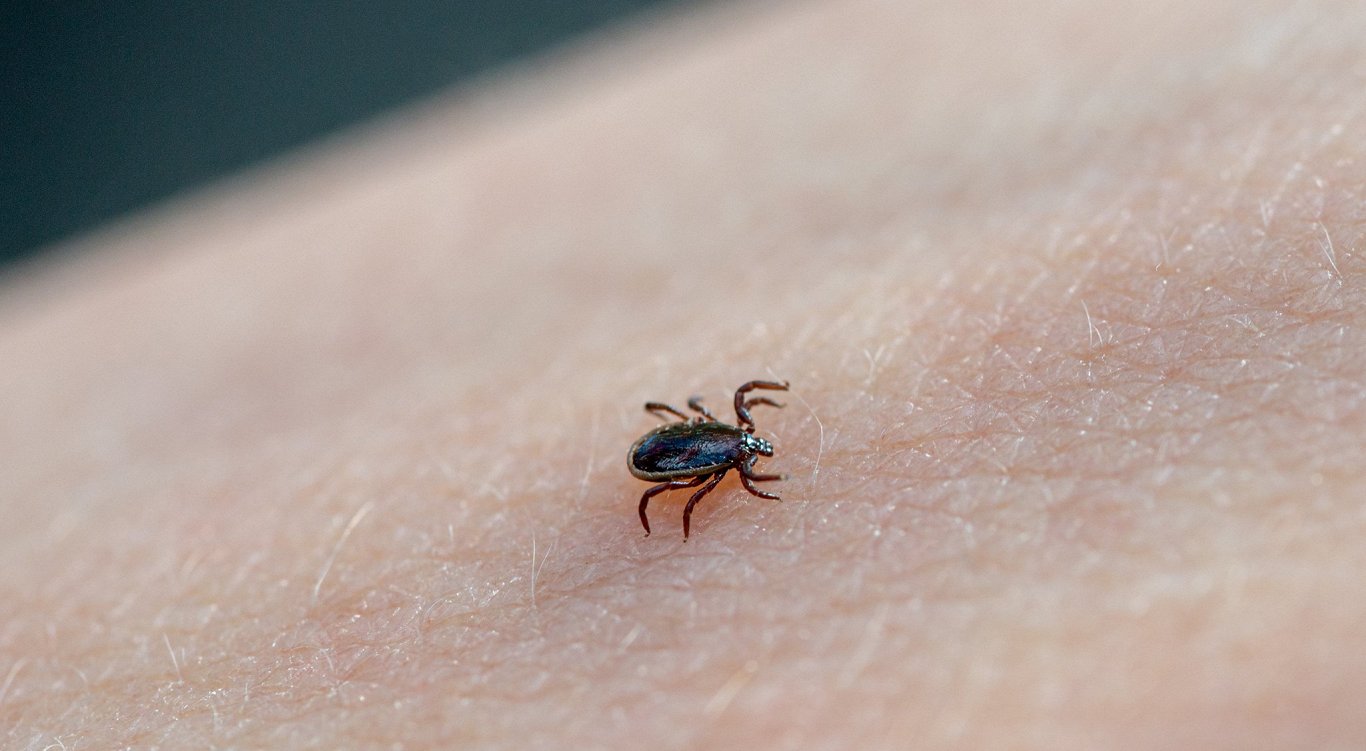Ticks are most often found in forests and fields, less often (but still by no means impossible) in urban areas such as city parks. According to data from the European Centre for Disease Prevention and Control, Latvia is among Europe's tick hotspots with 222 cases of tick-borne encephalitis in 2021.
When going out in nature, it is especially important to think about suitable clothing that protects arms and legs, making it difficult for ticks to climb aboard and work their way up to the fleshier areas of the body that are their preferred feeding grounds.
If a tick does manage to get under your skin, after its removal you should observe yourself for four weeks to see if any symptoms of disease appear, the epidemiologist of the Center for Disease Prevention and Control (SPKC) Viktorija Leitēna and Doctor of Biology, Associate Professor of the Faculty of Biology of the University of Latvia Voldemārs Spuņgis said.
"Safe habitats are urban areas, dog walking areas, crop fields, agricultural lands. More dangerous habitats are near cities, also forests, but mostly dry. There are few ticks in dune forests, there are also few ticks in swamps. The highest tick population density is in overgrown grass, it especially near the forest, at the edges of the forest, also in the clearings and at the edges of forest trails," said Spuņgis.
When going to the forest, it is important to dress properly to reduce the probability of being bitten by a tick. This means that the ends of the trousers should be tucked into socks, sleeves should have tight cuffs. Be sure to wear a head covering. Clothing should be light in color to help spot ticks.
"When you come back from the forest, you must check yourself, your children and also your pets; ticks can also be brought with flowers and branches," Leitēna emphasized.
If the tick has already been absorbed, it should be removed as soon as possible. In no case should anything be poured or smeared on it. It is very important not to crush the ticks when removing them.
"Of course, it is better to seek medical help to remove the tick. If you know how to do it yourself, then with tweezers, carefully, with clean hands, you can try to pull out the tick without squeezing it. But if there is such a possibility, it is better to seek medical help. In Riga, you can go to the Infectious Diseases Center, elsewhere you can call your family doctor or nurse. Any medical worker can do it," Leitena advised.
The SPKC representative reminded that vaccination is available only against tick-borne encephalitis, but not against Lyme disease and ehrlichiosis, which are also carried by ticks.
If the tick has already been absorbed, it should be removed as soon as possible. In no case should anything be poured or smeared on it. It is very important not to crush ticks when removing them.
"Of course, it is better to seek medical help to remove the tick. If you know how to do it yourself, then with tweezers, carefully, with clean hands, you can try to pull out the tick without squeezing it. But if there is such a possibility, it is better to seek medical help. In Rīga, you can go to the Infectious Diseases Center, elsewhere you can call your family doctor or nurse. Any medical worker can do it," Leitēna advised.
After removing the infected tick, it is recommended to observe yourself for four weeks. If, during this time, redness of the skin appears at the site of the tick bite or elsewhere on the body, a slightly elevated temperature, severe fatigue or headache is observed, a doctor should be consulted.
It is also important to take care of your four-legged companions, because ticks carry babesiosis, a disease that is not harmful to humans, but can cause severe tissue and organ damage in dogs. Babesiosis is especially likely to be transmitted by meadow ticks.
"Babesiosis is found in eight to 15 percent of ticks, because in the last 20-25 years a new species of ticks - the ornamented meadow tick - has entered our country.
"It is much bigger, prettier, with a distinctive pattern, faster and often forms a very high population density - there are up to 70 ticks per 100 square meters. They basically carry all the same diseases as our common dog tick and taiga tick, but they are a particularly good carrier of babesiosis, especially for dogs. The meadow mite has the peculiarity of sucking only where there is hair. Since a dog's hair is everywhere, it can get absorbed everywhere, but it can also get absorbed into the head of a human," Spuņgis explained, recommending protecting pets by using special anti-tick collars.
If you'd like to know how to properly remove a tick, here's an instructional video from an expert.



























